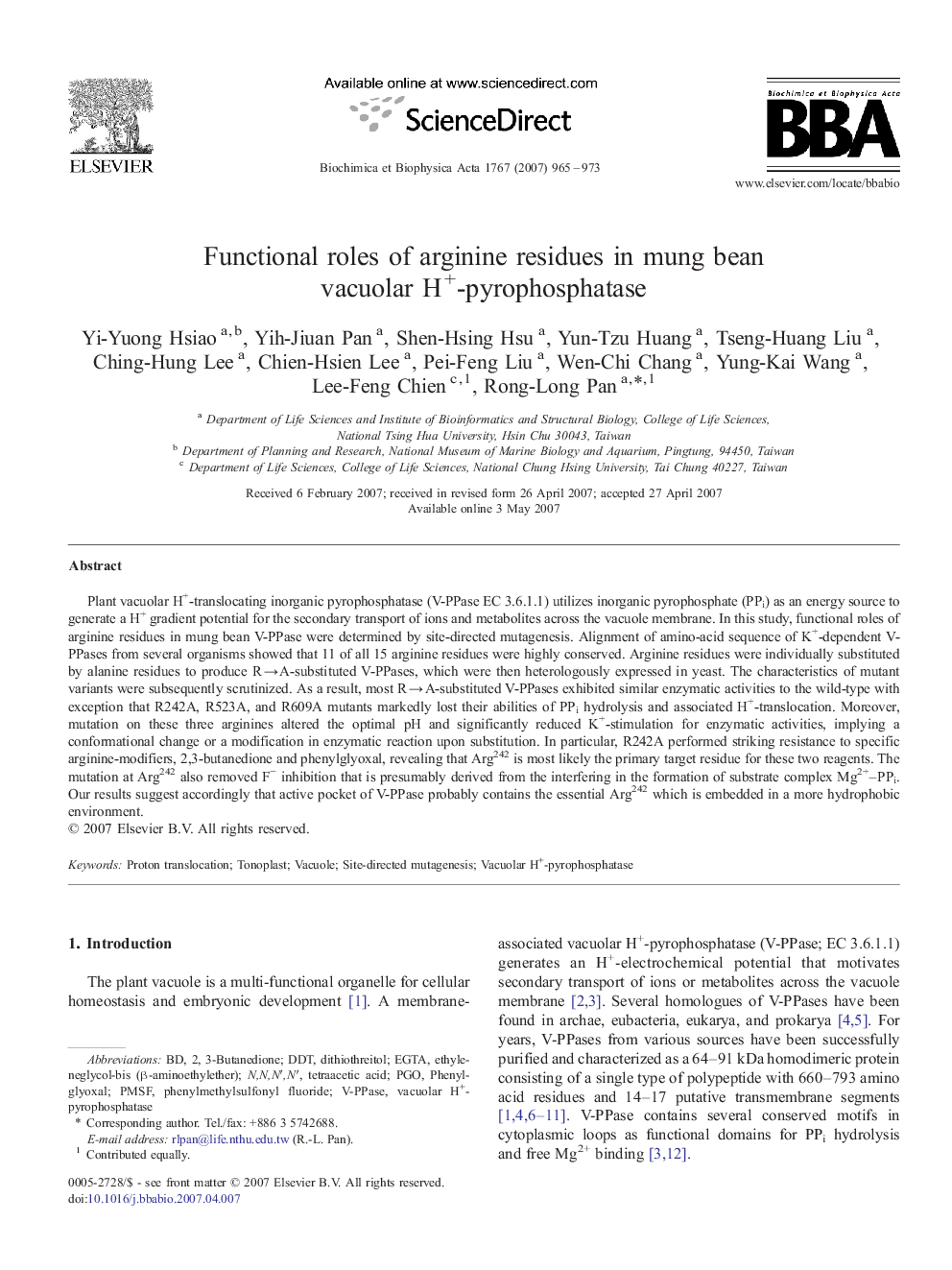| Article ID | Journal | Published Year | Pages | File Type |
|---|---|---|---|---|
| 1943468 | Biochimica et Biophysica Acta (BBA) - Bioenergetics | 2007 | 9 Pages |
Plant vacuolar H+-translocating inorganic pyrophosphatase (V-PPase EC 3.6.1.1) utilizes inorganic pyrophosphate (PPi) as an energy source to generate a H+ gradient potential for the secondary transport of ions and metabolites across the vacuole membrane. In this study, functional roles of arginine residues in mung bean V-PPase were determined by site-directed mutagenesis. Alignment of amino-acid sequence of K+-dependent V-PPases from several organisms showed that 11 of all 15 arginine residues were highly conserved. Arginine residues were individually substituted by alanine residues to produce R → A-substituted V-PPases, which were then heterologously expressed in yeast. The characteristics of mutant variants were subsequently scrutinized. As a result, most R → A-substituted V-PPases exhibited similar enzymatic activities to the wild-type with exception that R242A, R523A, and R609A mutants markedly lost their abilities of PPi hydrolysis and associated H+-translocation. Moreover, mutation on these three arginines altered the optimal pH and significantly reduced K+-stimulation for enzymatic activities, implying a conformational change or a modification in enzymatic reaction upon substitution. In particular, R242A performed striking resistance to specific arginine-modifiers, 2,3-butanedione and phenylglyoxal, revealing that Arg242 is most likely the primary target residue for these two reagents. The mutation at Arg242 also removed F− inhibition that is presumably derived from the interfering in the formation of substrate complex Mg2+–PPi. Our results suggest accordingly that active pocket of V-PPase probably contains the essential Arg242 which is embedded in a more hydrophobic environment.
